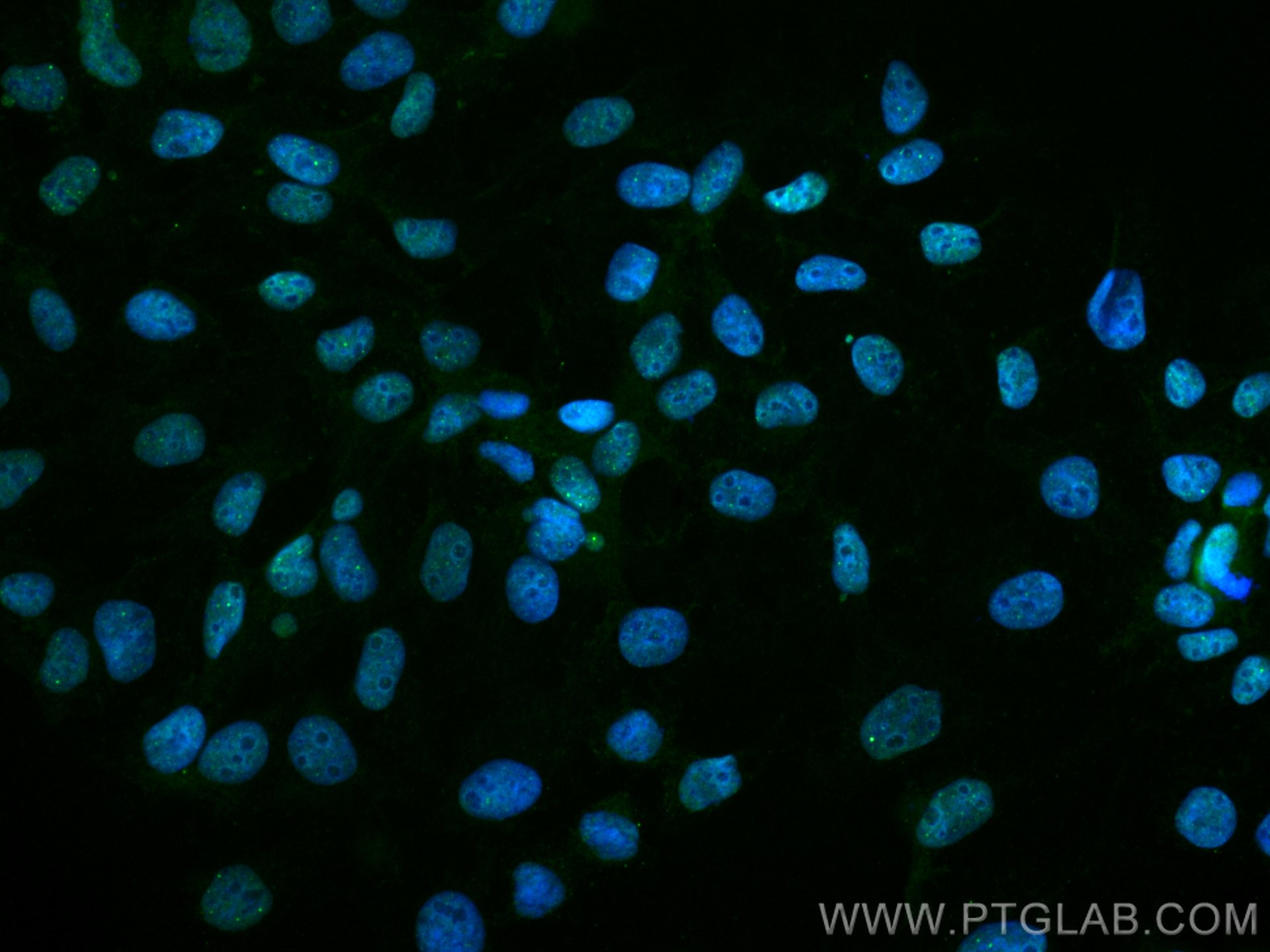Validation Data Gallery
Tested Applications
| Positive IF/ICC detected in | A431 cells |
Recommended dilution
| Application | Dilution |
|---|---|
| Immunofluorescence (IF)/ICC | IF/ICC : 1:200-1:800 |
| It is recommended that this reagent should be titrated in each testing system to obtain optimal results. | |
| Sample-dependent, Check data in validation data gallery. | |
Product Information
CL488-67879 targets DAXX in IF/ICC applications and shows reactivity with Human samples.
| Tested Reactivity | Human |
| Host / Isotype | Mouse / IgG2b |
| Class | Monoclonal |
| Type | Antibody |
| Immunogen |
CatNo: Ag14606 Product name: Recombinant human DAXX protein Source: e coli.-derived, PET28a Tag: 6*His Domain: 1-349 aa of BC109074 Sequence: MATANSIIVLDDDDEDEAAAQPGPSHPLPNAASPGAEAPSSSEPHGARGSSSSGGKKCYKLENEKLFEEFLELCKMQTADHPEVVPFLYNRQQRAHSLFLASAEFCNILSRVLSRARSRPAKLYVYINELCTVLKAHSAKKKLNLAPAATTSNEPSGNNPPTHLSLDPTNAENTASQSPRTRGSRRQIQRLEQLLALYVAEIRRLQEKELDLSELDDPDSAYLQEARLKRKLIRLFGRLCELKDCSSLTGRVIEQRIPYRGTRYPEVNRRIERLINKPGPDTFPDYGDVLRAVEKAAARHSLGLPRQQLQLMAQDAFRDVGIRLQERRHLDLIYNFGCHLTDDYRPGVD 相同性解析による交差性が予測される生物種 |
| Full Name | death-domain associated protein |
| Calculated molecular weight | 740 aa, 81 kDa |
| Observed molecular weight | 100-130 kDa |
| GenBank accession number | BC109074 |
| Gene Symbol | DAXX |
| Gene ID (NCBI) | 1616 |
| RRID | AB_2934581 |
| Conjugate | CoraLite® Plus 488 Fluorescent Dye |
| Excitation/Emission maxima wavelengths | 493 nm / 522 nm |
| Form | |
| Form | Liquid |
| Purification Method | Protein A purification |
| UNIPROT ID | Q9UER7 |
| Storage Buffer | PBS with 50% glycerol, 0.05% Proclin300, 0.5% BSA{{ptg:BufferTemp}}7.3 |
| Storage Conditions | Store at -20°C. Avoid exposure to light. Stable for one year after shipment. Aliquoting is unnecessary for -20oC storage. |
Background Information
Death domain-associated protein (DAXX) is a transcription repressor involved in both physiological and pathological conditions. DAXX overexpression is a common feature in diverse cancers, which correlates with tumorigenesis, disease progression and treatment resistance. Daxx migrated with an apparent molecular weight of approximately 100-130 kDa. (PMID: 31350900, PMID: 32203224, PMID: 31614769)
Protocols
| Product Specific Protocols | |
|---|---|
| IF protocol for CL Plus 488 DAXX antibody CL488-67879 | Download protocol |
| Standard Protocols | |
|---|---|
| Click here to view our Standard Protocols |

